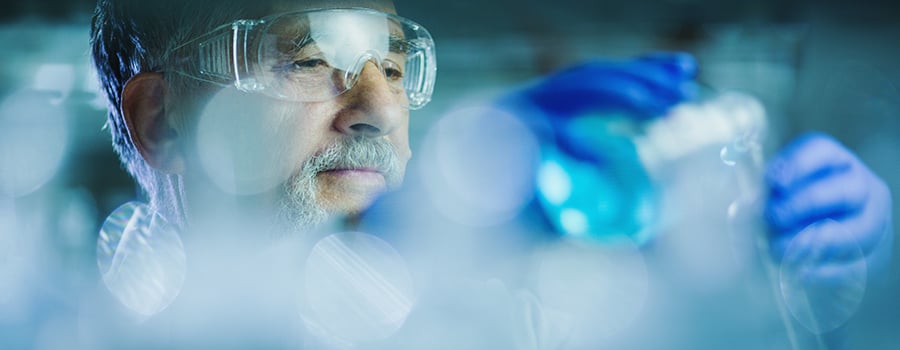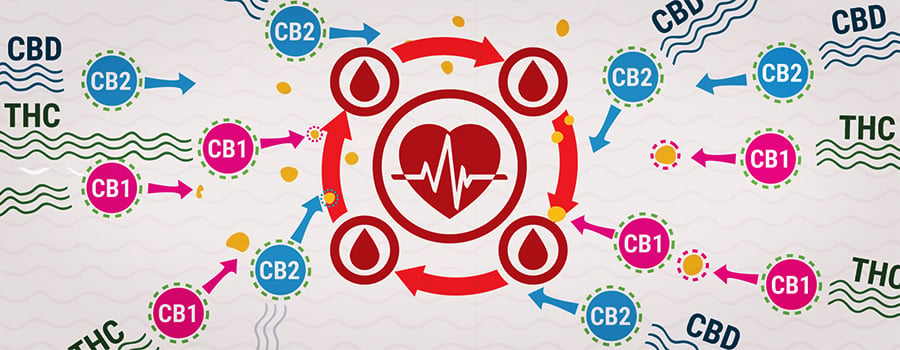.

Can Cannabis Effectively Treat Atherosclerosis?
Evidence today tells us that cannabinoids found in cannabis can help prevent atherosclerosis, a coronary artery disease caused by inflammation. For proper function, cannabinoids are critical and act as anti-inflammatory agents to help regulate the immune system. The development of atherosclerosis can be better understood through its complications.
OVERVIEW OF ATHEROSCLEROSIS DISEASE
Inflammation is a natural, protective response to infection. Its purpose is to remove pathogens or damaged tissue, although it’s very important that the location of damage is carefully monitored. If inflammation persists longer than needed, it can cause harm to the body. Inflammatory disease atherosclerosis, also known as coronary artery disease (CAD), is a very common contributing factor to life-threatening heart conditions including strokes and heart attacks.
Atherosclerosis is characterised by the hardening and narrowing of the arteries, impairing blood flow to the heart and brain caused by the accumulation of atherosclerotic plaque in the arteries. The inner cell lining of the arteries is made up of fat, cholesterol, and other substances found in the blood, called the endothelium. Subsequently, as plaque builds, an inflammatory response from the immune system will cause even more damage to the arteries. A partial or total blockage may occur and stop blood flow through the arteries of the brain, pelvis, heart, legs, arms, or kidneys caused by obstructive plaques. When this happens, the site of the plaque determines the type of coronary disease. These include:
- Coronary heart disease
- Angina
- Carotid artery disease
- Peripheral artery disease
- Chronic kidney disease
During early stages of atherosclerosis, there may be no visible symptoms for several years. You can analogise this to an overlooked plumbing issue with pipes. To get a better idea of things, just imagine a thick sludge forming on the inside of those pipes, creating a large obstruction and blocking anything that tries to pass. It may not be a perfect comparison regarding atherosclerosis, as buildups don’t just form on artery walls, but inside them. Still, you get the idea. Eventually, if this disease progresses, it will get to the point where you may feel these symptoms, which can be experienced during activity or at rest:

- Chest pain (This varies for men and women)
- Radiating pain throughout body
- Shortness of breath
- Overwhelming fatigue
- Sweating
- Nausea
- Breathing difficulties
- Heart palpitations
- Loss of consciousness
It’s not known what exactly causes atherosclerosis to develop, but smoking cigarettes, high blood pressure, high glucose levels, and high cholesterol levels could possibly contribute to one’s risk. For example, when “bad cholesterol” builds up in coronary artery walls, the body will send white blood cells and other cells to the toxic site. Over the years, a bump on the artery wall can develop and obstruct the supply of blood flow. This will eventually cause plaques to form. Patients will take prescribed medication to treat this disease, including blood thinners and statins commonly used to lower cholesterol levels. Although these kinds of medications may be life-saving and prevent future cardiac events, they are moderately effective and not without side effects. These include:
- Prolonged bleeding
- Bleeding gums
- Nosebleeds
- Bloody urine or feces
- Unusually heavy menstruation
Scientific literature has suggested that psychoactive compounds such as THC have a profound influence and beneficial effect on immune system cells. THC is said to decrease secretion of proinflammatory substances and their migration to the artery vessel wall.
CANNABINOIDS AND ATHEROSCLEROSIS
To determine the role of marijuana in atherosclerotic coronary heart disease prevention, we must first understand how cannabinoid receptors work in the endocannabinoid system. The endocannabinoid system is comprised of cannabinoids and plays a vital role in maintaining proper cell function in different systems of the body. Basically, there are two main cell receptors that make up the ECS: Cannabinoid Receptor 1 and Cannabinoid Receptor 2. CB1 receptors are found mostly on brain cells and are responsible for the chemical’s psychotropic effects, while CB2 receptors are more abundant and mostly found on immune cells.
There are many cannabinoid receptors found on the surface of cells in the human body. Major organs like the brain, heart, liver, and vascular smooth muscle cells (VSMCs) have CB1 receptors. Small, naturally-produced fat-like molecules within cell membranes known as endocannabinoids, endo meaning “within”, activate these receptors and act as the body’s natural THC. Endocannabinoids are synthesised on-demand; in other words, they get made and used exactly when they’re needed, rather than being stored away for later use like many other biological molecules in the body.
When cannabis is consumed, psychoactive compound THC interacts with CB1 and CB2 receptors. Immediately, cannabinoids bind to CB2 receptors and fight atherosclerosis by producing changes in brain messages and also by regulating blood circulation and cardiac functions.

TESTING THC ON MICE
A study[1] conducted by Francois Mach and colleagues showed that cannabis compounds are beneficial to blood vessels and reduced progression of atherosclerosis in mice. In the study, a group of mice were given a high cholesterol diet for 11 weeks, designed to clog their arteries. Halfway through the diet at 6 weeks, some mice were orally administered 1 mg of THC daily, which yielded the most significant improvements.
Predominant psychoactive compound THC was shown to inhibit disease progression through pleiotropic effects (which statins also accomplish) on inflammatory cells. Afterwards, findings revealed that mice who had received THC had a lower level of blood vessel clogging than the others. When another drug was used to block CB2 receptors in the mice, THC couldn't prevent buildup from fatty deposits in the animals' arteries. As for the CB1 receptors, the THC dose orally administered in the study was in an amount that was not high enough to actually produce psychoactive effects. During treatment, not one mouse showed unhealthy behavior. According to researchers of the cardiology division at University Hospital in Geneva, Switzerland including Mach, the results may be due to THC's anti-inflammatory properties. Dr. Mach believes future work regarding cannabis and inflammatory diseases will focus on finding drugs that mimic the benefit without producing the effects of cannabis on the brain.

FINAL THOUGHTS
Perhaps there is more research needed on the use of cannabis and preventing coronary diseases. The recreational use of cannabis may not be the best way to benefit from the plant’s medicinal properties. In other studies[2], it’s been found that cannabis use increased the risk of coronary and cardiovascular complications. Consuming marijuana increases heart rate and standing blood pressure, and also reduces lying blood pressure. This is why medical marijuana is suggested, as studies also show that various cannabinoids have their own effects on atherosclerosis.
Luckily, there is still hope for those wanting to naturally regulate and prevent problems caused by arterial plaque without traditional pharmaceuticals. Doctors have been prescribing patients edibles and vaporizers, as it is said to be a safer and healthier way to consume cannabis, especially for patients who are already sick. There are also some lifestyle changes a patient can make to manage atherosclerosis. It is important to:
- Get your cholesterol regularly checked
- Eat a low-saturated fat, low-cholesterol, and low-sodium diet
- Exercise regularly
- Maintain a healthy weight to reduce risk factors such as high blood pressure
- The role of the endocannabinoid system in atherosclerosis. - PubMed - NCBI https://www.ncbi.nlm.nih.gov
- Marijuana Use and Cardiovascular Disease. - PubMed - NCBI https://www.ncbi.nlm.nih.gov










































